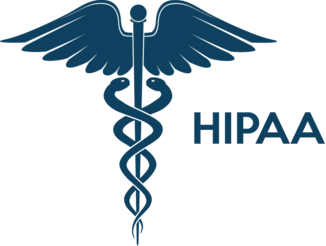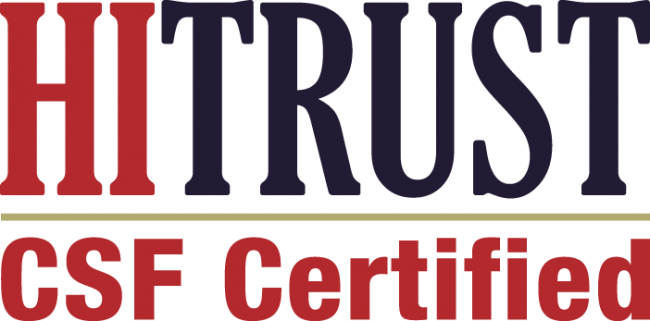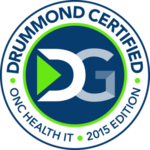Healthcare organizations invest significant resources in referral management programs to improve patient outcomes, enhance provider satisfaction, and optimize operational efficiency. However, without proper measurement frameworks, it becomes impossible to determine whether these programs are delivering the intended value. Understanding and tracking the right key performance indicators (KPIs) is essential for continuous improvement and demonstrating return on investment.
The Strategic Importance of Referral Management Metrics
Referral management sits at the intersection of clinical care, operational efficiency, and patient experience. A well-functioning referral system ensures patients receive timely, appropriate specialist care while maintaining care continuity. Conversely, inefficient referral processes lead to delayed care, frustrated patients, overwhelmed staff, and potential revenue loss.
Measuring referral management success requires a multidimensional approach that considers clinical outcomes, operational efficiency, provider satisfaction, and patient experience. Organizations must move beyond simple volume metrics to understand the quality and effectiveness of their referral processes.
Essential KPIs for Referral Management Programs
Operational Efficiency Metrics
Referral Processing Time represents the duration from initial referral request to specialist appointment scheduling. Industry benchmarks suggest optimal processing times of 24-48 hours for routine referrals and 2-4 hours for urgent cases. This metric directly impacts patient satisfaction and clinical outcomes.
Referral Completion Rate measures the percentage of referrals that result in completed specialist visits. High-performing organizations typically achieve completion rates of 85-95%. Low completion rates may indicate barriers in the referral process, patient access issues, or inadequate follow-up mechanisms.
Time to First Available Appointment tracks how quickly patients can access specialist care after referral approval. This metric varies significantly by specialty, with dermatology and orthopedics often showing longer wait times. Establishing specialty-specific benchmarks helps identify bottlenecks and resource allocation needs.
Referral Accuracy Rate measures the percentage of referrals sent to appropriate specialists with complete, accurate information. Target accuracy rates should exceed 95%, as inaccurate referrals lead to delays, rework, and provider frustration.
Clinical Quality Indicators
Referral Appropriateness evaluates whether referrals align with established clinical guidelines and criteria. This metric requires clinical review but provides crucial insights into provider education needs and potential overutilization patterns.
Specialist Acceptance Rate indicates the percentage of referrals accepted by specialist providers. Low acceptance rates may signal inappropriate referrals, insufficient clinical information, or network adequacy issues.
Care Coordination Score measures the quality of information sharing between referring and specialist providers. This can be assessed through provider surveys or structured communication audits.
Patient Experience Metrics
Patient Satisfaction with Referral Process captures patient perceptions of ease, timeliness, and communication throughout the referral journey. Regular patient surveys should achieve satisfaction scores above 85%.
No-Show Rates for Specialist Appointments reflect patient engagement and access barriers. Optimal no-show rates should remain below 15%, with higher rates indicating potential scheduling, communication, or access issues.
Patient Wait Time Experience measures actual versus perceived wait times, as patient perception often differs from objective measures. Managing expectations through clear communication significantly impacts satisfaction.
Provider Satisfaction Indicators
Referring Provider Satisfaction encompasses ease of referral submission, communication quality, and overall process efficiency. Regular provider surveys help identify friction points and improvement opportunities.
Specialist Provider Satisfaction measures specialist perceptions of referral quality, information completeness, and appropriateness. This metric is crucial for maintaining strong specialist networks.
Staff Productivity Metrics track referral coordinator efficiency, including referrals processed per staff member and time spent on referral-related activities.
Financial Performance Metrics
Referral Leakage Rate measures the percentage of patients who receive specialist care outside the organization’s network. High leakage rates represent significant revenue loss and indicate network or access issues.
Revenue per Referral calculates the average revenue generated from each referral, helping organizations understand the financial impact of their referral programs.
Cost per Referral includes all administrative costs associated with processing referrals, providing insights into operational efficiency and resource allocation.
Comprehensive Measurement Frameworks
The Balanced Scorecard Approach
A balanced scorecard framework organizes referral management metrics across four perspectives: clinical outcomes, operational processes, patient and provider satisfaction, and financial performance. This approach ensures comprehensive measurement while maintaining focus on strategic objectives.
The clinical perspective includes metrics such as referral appropriateness, care coordination effectiveness, and clinical outcome improvements. The operational perspective focuses on processing times, completion rates, and system efficiency. The stakeholder perspective encompasses patient and provider satisfaction measures, while the financial perspective tracks revenue impact and cost efficiency.
Process-Based Measurement Framework
This framework follows the referral journey from initiation to completion, measuring performance at each critical stage. Pre-referral metrics include clinical decision support utilization and guideline adherence. Referral processing metrics track submission accuracy, approval times, and scheduling efficiency. Post-referral metrics evaluate appointment completion, outcome reporting, and care coordination.
Stage-specific measurement helps identify bottlenecks and improvement opportunities while ensuring comprehensive process coverage. Regular process mapping exercises ensure metrics remain aligned with actual workflow patterns.
Outcome-Based Framework
Outcome-focused frameworks emphasize results rather than process measures. Primary outcomes include patient health improvements, provider satisfaction, and financial performance. Secondary outcomes encompass access improvements, care coordination enhancements, and system efficiency gains.
This approach requires longer measurement periods and more sophisticated analytics but provides clearer connections between referral management activities and organizational objectives.
Establishing Meaningful Benchmarks
Internal Benchmarking
Organizations should establish baseline performance levels and track improvement over time. Historical performance data provides context for current results and helps identify trends. Seasonal variations, such as increased referrals during certain months, should be considered when setting targets.
Internal benchmarking also enables comparison between different departments, provider groups, or geographic locations within the same organization. This comparative analysis helps identify best practices and areas needing improvement.
External Benchmarking
Industry benchmarks provide valuable context for organizational performance. Healthcare associations, consulting firms, and technology vendors often publish referral management benchmarks. However, organizations must consider their unique characteristics, including size, patient population, and geographic factors, when applying external benchmarks.
Peer networking and collaborative benchmarking initiatives offer opportunities to share best practices while maintaining competitive advantages. Regional health information exchanges and provider networks can facilitate these collaborative efforts.
Setting Realistic Targets
Benchmarks should be challenging yet achievable, considering organizational capabilities and constraints. Setting unrealistic targets can demotivate staff and undermine improvement efforts. Conversely, easily achievable targets may not drive meaningful change.
Consider implementing tiered targets, with short-term achievable goals and longer-term stretch targets. This approach maintains momentum while working toward significant improvements.
Implementation Best Practices
Data Collection and Management
Successful measurement requires robust data collection systems and processes. Automated data capture reduces manual burden and improves accuracy. Electronic health records, referral management systems, and practice management platforms should be configured to capture relevant metrics automatically.
Data quality initiatives ensure measurement accuracy and reliability. Regular data validation, staff training, and system audits help maintain data integrity. Clear data definitions and collection procedures reduce variability and improve consistency.
Reporting and Communication
Regular reporting keeps stakeholders informed and engaged in improvement efforts. Dashboard-style reports provide quick performance overviews, while detailed analytical reports support deep-dive investigations. Reports should be tailored to audience needs, with executive summaries for leadership and operational details for frontline staff.
Visualization tools enhance report effectiveness by making complex data more accessible and actionable. Trend analyses help identify patterns and predict future performance, while exception reports highlight areas requiring immediate attention.
Continuous Improvement Integration
Measurement should drive continuous improvement rather than simply monitoring performance. Regular review meetings help translate metrics into actionable insights and improvement initiatives. Root cause analysis of performance gaps identifies underlying issues and potential solutions.
Staff involvement in metric selection and interpretation increases buy-in and improves data utilization. Frontline staff often provide valuable context for metric interpretation and identify practical improvement opportunities.
Advanced Analytics and Predictive Insights
Predictive Modeling
Advanced organizations leverage predictive analytics to anticipate referral patterns, identify at-risk referrals, and optimize resource allocation. Machine learning algorithms can analyze historical patterns to predict no-show probabilities, processing delays, and completion likelihood.
Predictive models help proactively address potential issues rather than simply reacting to problems after they occur. For example, identifying patients with high no-show risk enables targeted interventions to improve appointment attendance.
Real-Time Monitoring
Real-time dashboards provide immediate visibility into referral performance, enabling rapid response to emerging issues. Alert systems notify staff of delays, errors, or other problems requiring immediate attention.
Real-time monitoring is particularly valuable for urgent referrals and high-priority patients, ensuring appropriate care delivery without delays.
Integrated Analytics
Comprehensive analytics platforms integrate referral management data with other organizational metrics, providing broader context and identifying interconnections. For example, referral patterns may correlate with patient satisfaction scores, clinical outcomes, or financial performance.
Integrated analytics support more sophisticated analysis and help identify system-wide improvement opportunities that single-metric approaches might miss.
Overcoming Common Measurement Challenges
Data Availability and Quality
Many organizations struggle with incomplete or inaccurate referral data. Legacy systems may not capture all relevant information, while manual processes introduce errors and inconsistencies. Addressing these challenges requires systematic data improvement initiatives and potentially system upgrades.
Staff training on data entry procedures and the importance of accurate documentation helps improve data quality. Regular data audits identify problematic areas and track improvement progress.
Resource Constraints
Measurement initiatives require dedicated resources for data collection, analysis, and reporting. Organizations with limited resources should prioritize the most critical metrics and gradually expand measurement capabilities over time.
Automated tools and integrated systems can reduce manual effort required for measurement while improving accuracy and timeliness.
Stakeholder Engagement
Successful measurement programs require buy-in from all stakeholders, including providers, staff, and leadership. Clear communication about measurement objectives and benefits helps build support and encourage participation.
Regular feedback on improvement results demonstrates the value of measurement efforts and maintains stakeholder engagement over time.
Technology’s Role in Effective Measurement
Referral Management Systems
Dedicated referral management platforms provide built-in measurement capabilities and standardized reporting. These systems typically offer comprehensive dashboards, automated alerts, and integration with other healthcare systems.
When selecting referral management technology, organizations should carefully evaluate measurement and reporting capabilities to ensure alignment with their KPI frameworks.
Integration Capabilities
Integrated measurement requires seamless data flow between different systems and platforms. APIs and data integration tools enable comprehensive measurement without manual data compilation.
Interoperability standards support data sharing and reduce integration complexity, making comprehensive measurement more achievable for organizations with diverse technology environments.
Future Trends in Referral Management Measurement
Value-Based Care Alignment
As healthcare transitions toward value-based payment models, referral management measurement must align with quality and outcome metrics. Organizations will need to track clinical outcomes, cost-effectiveness, and patient experience measures more comprehensively.
Referral management programs will increasingly be evaluated based on their contribution to overall care quality and cost management rather than simply operational efficiency.
Patient-Centric Metrics
Patient engagement and satisfaction will become increasingly important as consumers take more active roles in their healthcare decisions. Social determinants of health, patient preferences, and access barriers will require greater measurement attention.
Patient-reported outcome measures and experience metrics will provide a more nuanced understanding of referral program effectiveness from the patient perspective.
Conclusion
Effective measurement is fundamental to successful referral management programs. Organizations must implement comprehensive KPI frameworks that capture operational efficiency, clinical quality, patient experience, and financial performance dimensions. The key lies in selecting metrics that align with strategic objectives while providing actionable insights for continuous improvement.
Successful measurement requires robust data collection systems, regular reporting processes, and strong stakeholder engagement. Organizations should start with fundamental metrics and gradually expand their measurement capabilities as systems and processes mature.
The investment in comprehensive referral management measurement pays dividends through improved patient outcomes, enhanced provider satisfaction, operational efficiency gains, and stronger financial performance. As healthcare becomes increasingly complex and competitive, organizations with sophisticated measurement capabilities will have significant advantages in optimizing their referral management programs.
Healthcare organizations seeking to transform their referral management performance can benefit from comprehensive solutions that integrate advanced measurement capabilities with streamlined workflows. HealthViewX Referral Management provides the robust analytics and KPI tracking frameworks discussed in this blog, enabling healthcare organizations to measure, monitor, and continuously improve their referral programs for optimal patient outcomes and operational efficiency.








